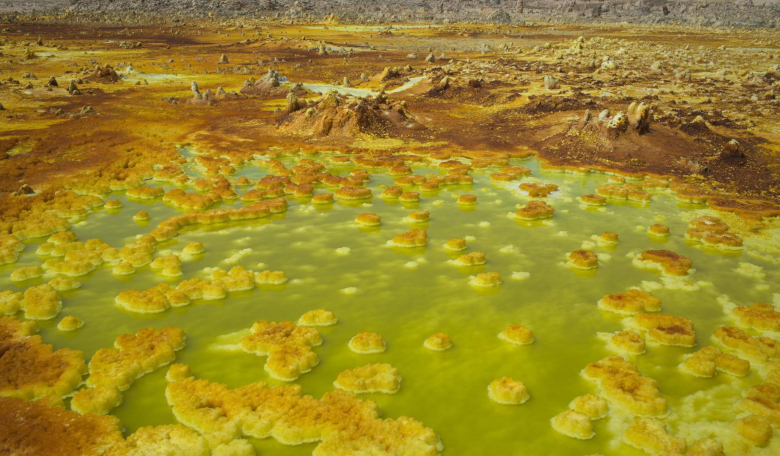When we think of terraforming another planet such as Mars, large machines pumping out synthesised air into huge doomed buildings spring to mind. However another way to transform a planet might be as ‘simple’ as coating it in a thin layer of silica aerogel. This would insulate the Red Planet’s surface helping it to sustain liquid water all year-round while protecting it from harmful ultraviolet (UV) radiation.
Sound fantastical? Not necessarily, as a new study by scientists in the US and UK have found that such a situation has the potential to allow photosynthetic life to develop on Mars without extensive planetary-scale modifications.
Despite the name, aerogels, of which there are a few varieties, do not resemble a gel in their physical properties but are instead solid, rigid, and dry materials; the name comes from the way they are processed, which involves slowly extracting liquid from a gel by supercritical drying and replacing it with gas instead.
Consequently, aerogels are made from more than 90 percent air but this extremely lightweight material is anything but flimsy. Their rigid, transparent structure means they have fantastic weight-bearing and thermal conductivity properties. Put it this way, if an average person were made of silica aerogel, they would weigh just 450 grams and be capable of supporting almost half a tonne.
It is not surprising then that this fascinating nanomaterial has attracted a lot of interest from manufacturing firms over the years, not least from aerospace companies who want to capitalise on the applications this low density but hard material can provide.
Now this wonder material is being thought up for uses in ways its discoverer – Dr Samuel Stephen Kistler – would probably never have dreamed of; terraforming our nearest planetary neighbour, Mars.
Conditions on the Martian surface are far from habitable to terrestrial life at least. It is too cold and frigid to maintain liquid water and there is no ozone layer to protect from harmful radiation. But that doesn’t mean to say that a healthy population of plant and microbial life couldn’t get established if the conditions were right.
Traditional terraforming means that involve massive environmental modification are currently well beyond human capability for the foreseeable future, so Robin Wordsworth of Harvard University, Cambridge, MA, USA and colleagues looked at the problem from a completely different angle; a thin and durable substance spread along the ground.
After replicating the surface conditions of Mars in laboratory experiments, the team were able to demonstrate that a 2–3 centimetre layer of silica aerogel can increase the temperature of the underlying surface by 50 degrees Celsius. The transparent aerogel allows enough light for photosynthesis to take place, but its solid structure prevents heat from escaping.
An added bonus of the gel is that any harmful UV radiation bombarding the planet’s surface is absorbed, thus protecting the planet’s environment below the layer of nanomaterial.
The aerogel also has uses for ice-rich temperate regions too. By initiating climate models of Mars, Wordsworth and colleagues additionally found that the silica aerogel could keep water in a liquid state up to a depth of several metres throughout the Martian year.
“This regional approach to making Mars habitable is much more achievable than global atmospheric modification,” say the authors in their research paper recently submitted to Nature. And better still, you don’t have to go all the way to Mars to test it out, as note the authors, “it can be developed systematically, starting from minimal resources, and can be further tested in extreme environments on Earth today.”
The potential for Mars to be made habitable to photosynthetic life in the short to medium term is an exciting prospect, but one that also comes with a string of astrobiological risks. If, for example Mars still possesses extant life today, its survival or detection might be hampered by the presence of Earth-based microorganisms. Therefore just because you can make somewhere habitable, doesn’t necessarily mean you should.
There is little chance, if any chance of introduced Earth-based life surviving beyond the aerogel covered regions say the authors, but, they note, “risks associated with this approach to enabling Martian habitability will need to be weighed carefully against the benefits to Mars science and human exploration in future.











